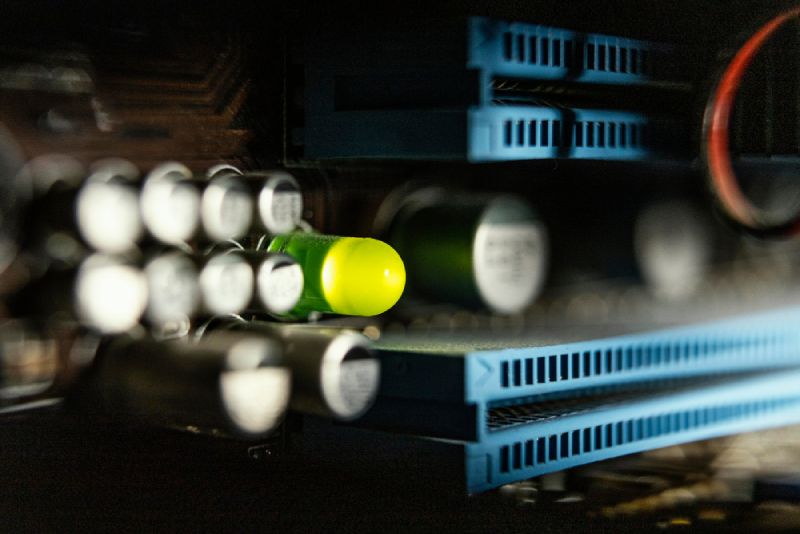Exploring Server Motherboards
Introduction
A motherboard is the backbone of a computer system, allowing various hardware components to communicate and work together. The motherboard is responsible for managing all the data and power flow between the CPU, memory, storage, and other essential peripherals. While most people are familiar with desktop motherboards, there is another type of the motherboard called server motherboards that deserve the spotlight. In this article, we will explore server motherboards, their features, and how they differ from desktop motherboards.
What is a Server Motherboard?
A server motherboard is designed for use in a data center or server environment. It is built with durability and reliability in mind, capable of handling multiple CPUs, large amounts of memory, and high-bandwidth I/O operations. These motherboards are built to support server-class components such as ECC memory, SAS, SATA, NVMe, and PCIe drives, and redundant power supplies.
Key Features of Server Motherboards
Dual CPU Support: Server motherboards support dual CPUs, allowing for increased processing capabilities. These CPUs are usually Xeon or Opteron processors, which are designed to handle server workloads better than their desktop counterparts.
ECC Memory Support: Error-correcting code (ECC) memory is essential in server environments where data accuracy is paramount. Server motherboards support ECC memory modules, which can detect and correct data transmission errors in real-time.
Multiple PCIe Slots: Server motherboards support multiple PCIe slots, enabling the installation of multiple NICs, RAID controllers, or GPU cards. The PCIe slots are usually arranged in x8 or x16 configurations for maximum bandwidth and performance.
Redundant Power Supplies: Server motherboards feature redundant power supplies that ensure the system stays operational even if one power supply fails. This feature is vital in environments where uptime is critical, and any downtime can result in significant financial losses.
What should I look for in a server motherboard?
When selecting a server motherboard, there are specific considerations to keep in mind compared to a standard consumer motherboard. These primarily relate to reliability, performance, and compatibility. Here are some factors to consider:
- Form Factor: Server motherboards come in several form factors like ATX, Extended ATX (E-ATX), Micro ATX (M-ATX), and others, which fit into corresponding server cases. The form factor also dictates how many expansion slots and other components the board can accommodate.
- CPU Socket Type: The motherboard must be compatible with the server processor you plan to use. Server motherboards often support high-end or specific server-grade processors like Intel’s Xeon series or AMD’s EPYC series.
- Multi-CPU Support: Some server motherboards support multiple CPUs, which can be useful for highly parallel tasks like virtualization or high-performance computing.
- RAM: Server motherboards should have multiple slots for RAM and support for ECC (Error Correcting Code) memory. ECC memory can detect and correct minor data corruption, which can be critical for server stability.
- Storage Interface: Look for motherboards that support interfaces like SATA, SAS, or NVMe, depending on your storage needs. Some server motherboards also offer RAID support for data redundancy.
- Expansion Slots: Consider the number of PCI Express (PCIe) slots for additional cards like RAID controllers, network cards, or other server-specific expansions.
- Networking: Many server motherboards come with dual or multiple gigabit (or even 10 Gigabit) Ethernet ports.
- Reliability and Durability: Server motherboards are designed for 24/7 operation and typically come with high-quality components to support this.
- Remote Management: Features like IPMI (Intelligent Platform Management Interface) allow for remote monitoring and management of the server, which can be beneficial in a data center environment.
- Power Requirements: Server components can draw a lot of power, so ensure your power supply unit (PSU) meets the motherboard’s requirements.
Remember, servers are typically designed for specific tasks such as file serving, web serving, virtualization, etc., and different server builds may prioritize different features. Always choose the hardware that best suits the tasks your server will be performing.
How do Server Motherboards differ from Desktop Motherboards?
The main difference between server motherboards and desktop motherboards is their design philosophy. Desktop motherboards are designed with consumer-level systems in mind and usually have features such as onboard audio, Wi-Fi, RGB lighting, and multiple display outputs. Server motherboards, on the other hand, are designed with reliability, scalability, and performance in mind.
Another key difference is the types of components supported. Server motherboards are built to support server-class components such as ECC memory, SAS, SATA, NVMe, and PCIe drives, which are not commonly found in consumer-level systems. Additionally, server motherboards support multiple CPUs, which is not possible on desktop motherboards.
Cost Considerations
Server motherboards are typically more expensive than desktop motherboards due to the specialized components used in their construction. However, the additional cost is justified by their superior reliability, redundancy, and performance. If you’re building a server or data center, investing in a high-quality server motherboard is crucial to ensure system stability and uptime.
Conclusion
Server motherboards are an essential component in any server or data center setup. They are designed to handle heavy workloads, support multiple CPUs, and offer features such as ECC memory, redundant power supplies, and multiple PCIe slots. While they are more expensive than desktop motherboards, the added reliability and performance are worth the investment in the long run. When planning your server or data center build, be sure to consider a high-quality server motherboard to ensure stability and uptime.



